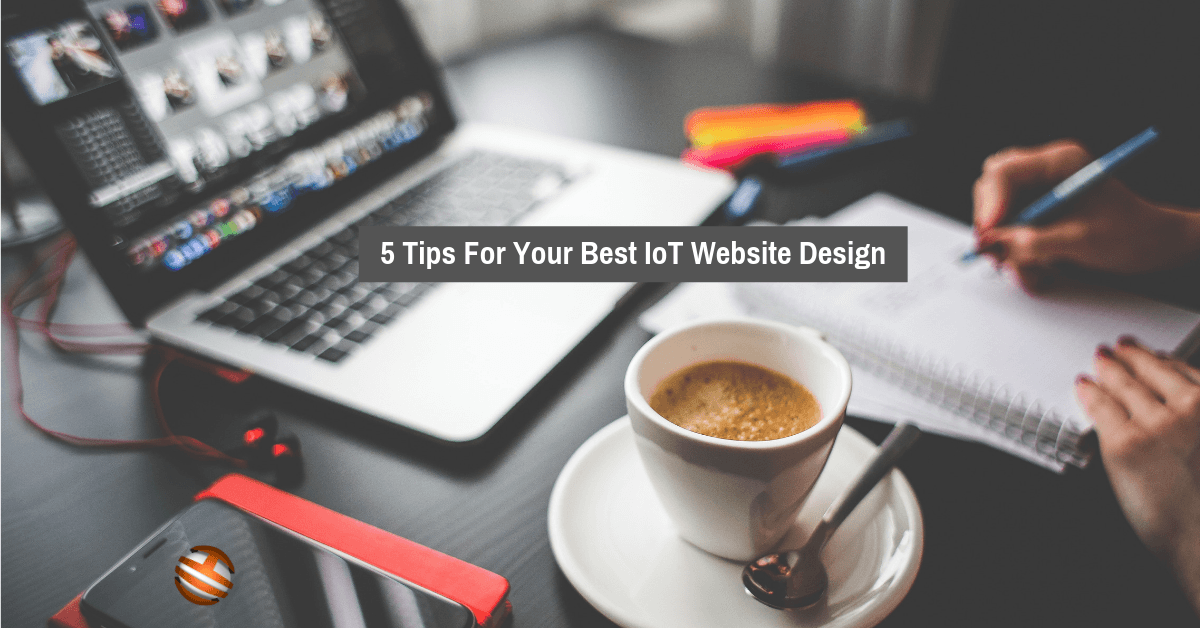5 Tips For Your Best IoT Website Design
If you are somewhat inclined with anything tech-related, you have probably heard of the term "internet of things" or IoT. There's a lot of buzz surrounding this topic, and the general public has started to catch up with its implications. Dictionary.com puts the meaning of the internet of things as "a network of everyday devices, appliances, and other objects equipped with computer chips and sensors that can collect and transmit data through the internet." The first application of this idea has already permeated our lives. Smartphones, smart homes, home security systems, and smart kitchen appliances are only a few examples. Even the latest models of cars have incorporated IoT into their programming, making them far more comfortable to drive and navigate. But all these applications are only the first wave of deployment. Many experts believe the trajectory of human development will center around this idea. From here on out, we will start to see more and more common day devices that are connected to the internet. With the idea of IoT bursting into the scene, developers and designers will have a huge part to play. Besides designing apps for devices, they will be at the forefront in the development of devices and software that make use of the internet as a way to communicate with one another. This is especially true for web developers who will be tasked to optimize sites to cater to any number of devices attempting to connect to it. The internet of things is already gaining traction in the online space. It is predicted to revolutionize how humans interact with one another using technology, and its effect will have far-reaching implications. One great example is the way web designers are slowly implementing IoT in how they design websites. Many web-based agencies like SEO agency Delray beach realized the value of IoT networks and have begun implementing strategies to facilitate the trend. Before diving deeper into how IoT and web design connect, let us first understand one key element, the GUI, or graphical user interface. The GUI is what you see on any website. It is what users use to interact with their devices. Those icons, hyperlinks, and other visual indicators that people click are what constitute GUI. It makes it far easier and a lot more comfortable for users to navigate a website. Many different design trends and considerations should be implemented together with IoT web design to make the interaction faster and more efficient. This interaction will serve as a communication bridge between the site and the device. The manner of communication would vary from one device to another since each one has a unique set of programming, capabilities, and functionalities used for transmitting and receiving information. The network of devices that are connected depends on servers. The vast amount of data that are collected by the sensors are stored online. Advanced communication protocols are implemented to ensure uninterrupted communication between the many devices. And it is the available user interface that assists with the interaction among connected devices. Websites that are designed with IoT in mind, therefore, should be robust, reliable, modern and, most of all, fast. Many standard best practices for usability will need to be used in designing these user interfaces. The goal is to create an intuitive and logical flow of data transmittal between the site and the device that facilitates excellent user experience.Why IoT is Essential in This Digital Era
Difference Between Regular and IoT Sites
Share your project details to build your path toward success.
There is a huge difference between traditional web design and IoT-involved web design. For one, the network used is a lot more complex than a regular website application. The system will have to deal with vast amounts of data, complicated communication, a dynamic user interface, and security issues. Here are five tips to make the best IoT website design.
1) Data Collection
IoT systems deal with vast amounts of data. These are collected from real-time sensors. It is then filtered, processed, then transmitted to the cloud. This kind of data volume puts a strain on the network, slowing it down. Also, even the loss of a tiny amount of data can result in several issues. All these have pushed IoT development to focus more on scalability and reliability. Scalability means data collection and distribution don't just rely on the volume of data, while reliability implies the collection and distribution of data are done without any interruption.
2) Dynamic UI
Like mentioned earlier, the user interface helps users interact with the IoT web design system. The UI display insights and relevant data that has been collected, which helps manage the network. Because IoT companies enable sites to collect a massive amount of data, the site has to be able to process and display a lot of analytics. For this reason, the dashboard for users that are streamlined has become commonplace.
3) Advanced Security
There has been a lot of concern for security for IoT enabled networks. In fact, it is one major challenge that IoT faces due to the amount of data that needs to be gathered. Smart devices that receive and transmit data have to be secured and resilient from outside corruption and intervention to keep the data and the network safe. This is a vital task for web developers.
4) Power management
Most IoT devices run on battery power. Because of the volume of data that's collected and transmitted between the web and the device, a lot of battery power is needed to process and analyze it. It is crucial, therefore, that developers create efficient ways to collect, process, and transmit data without using so much battery power.
5) Testing
There is an apparent reason why testing holds more value for IoT enabled sites than regular sites. Testing could show flaws and weaknesses that could be exploited by hackers, and it could help asses the power management needs of the network.
Final Thoughts
IoT is still in its infancy, yet it has permeated many aspects of human lives. Our phones are already essential devices in our daily activities. Smart home appliances have been installed and in operation in different ways, such as temperature control and lighting. Security also relies heavily on IoT to enable users to stream live footage and to store them through the cloud. It is expected that within one generation, more than half of business operations all over the world will employ the use of IoT web design.







